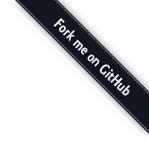ARTS 第七周
每周完成一个ARTS(也就是 Algorithm、Review、Tip、Share 简称ARTS):
- 每周至少做一个 leetcode 的算法题
- 阅读并点评至少一篇英文技术文章
- 学习至少一个技术技巧
- 分享一篇有观点和思考的技术文章。
Algorithm
给定一个二维网格和一个单词,找出该单词是否存在于网格中。
单词必须按照字母顺序,通过相邻的单元格内的字母构成,其中“相邻”单元格是那些水平相邻或垂直相邻的单元格。同一个单元格内的字母不允许被重复使用。
示例:
board =
[
[‘A’,’B’,’C’,’E’],
[‘S’,’F’,’C’,’S’],
[‘A’,’D’,’E’,’E’]
]
给定 word = “ABCCED”, 返回 true.
给定 word = “SEE”, 返回 true.
给定 word = “ABCB”, 返回 false.
思路:DFS 的解法,发现匹配即返回true
1 |
|
Review
本周阅读英文:Top 5 Big Data and Apache Spark Courses for Java Developers to Learn Online in 2019
文中指出 Spark 比之 Hadoop 效率要更高,并且推荐了五门课程:
- 推荐:Apache Spark with Java - Learn Spark from a Big Data Guru
- Apache Spark with Scala - Learn Spark from a Big Data Guru
- 推荐:Apache Spark Fundamentals
- Big Data: The Big Picture By Pluralsight
- 推荐:Apache Spark 2.0 + Java : DO Big Data Analytics & ML
不定时更新学习内容
Tip
一点心得:还是要有月计划,不然容易被琐事打乱节奏。
Share
本周分享机器学习平台 PAI 入门,参考本站文章,点击:Ali 机器学习平台 PAI
